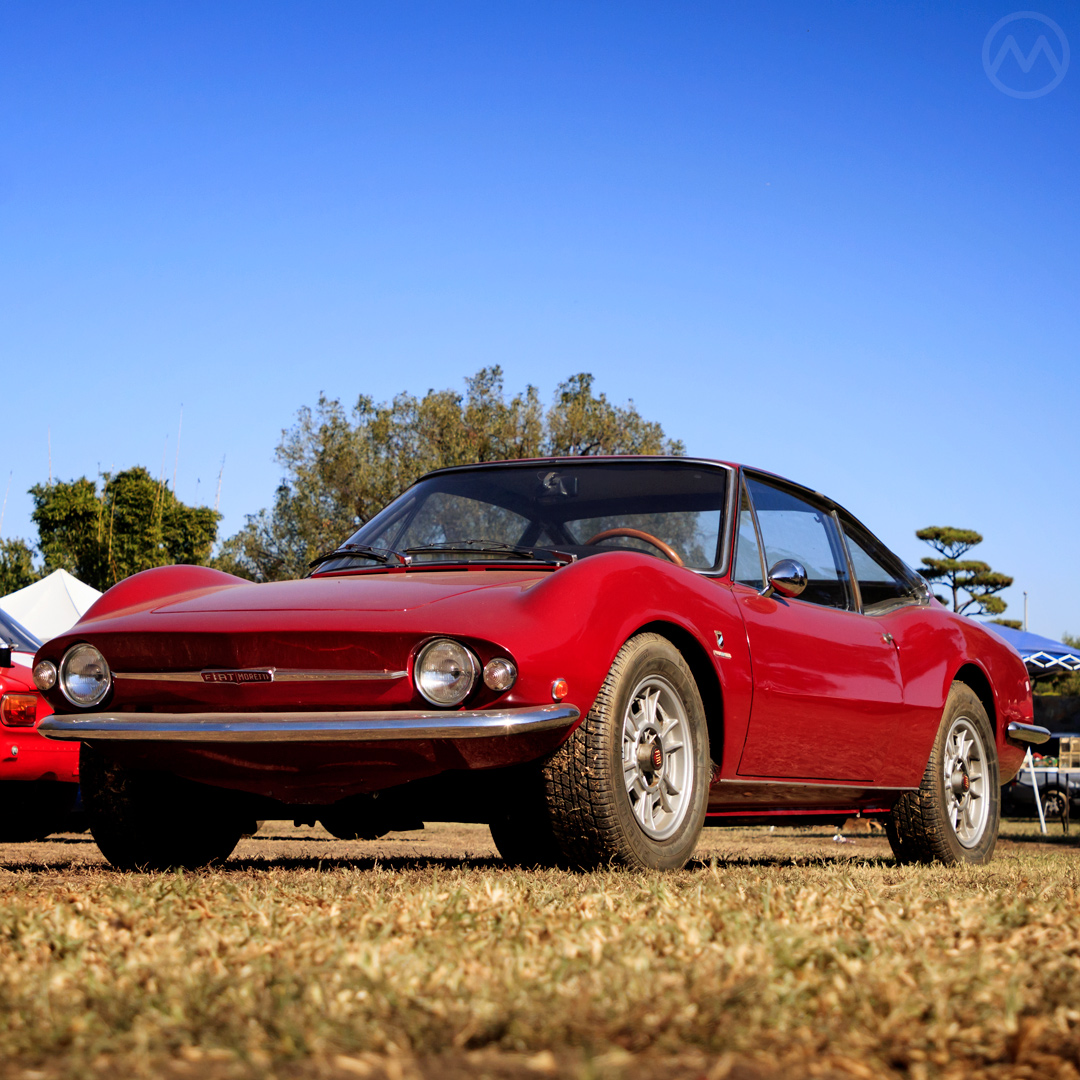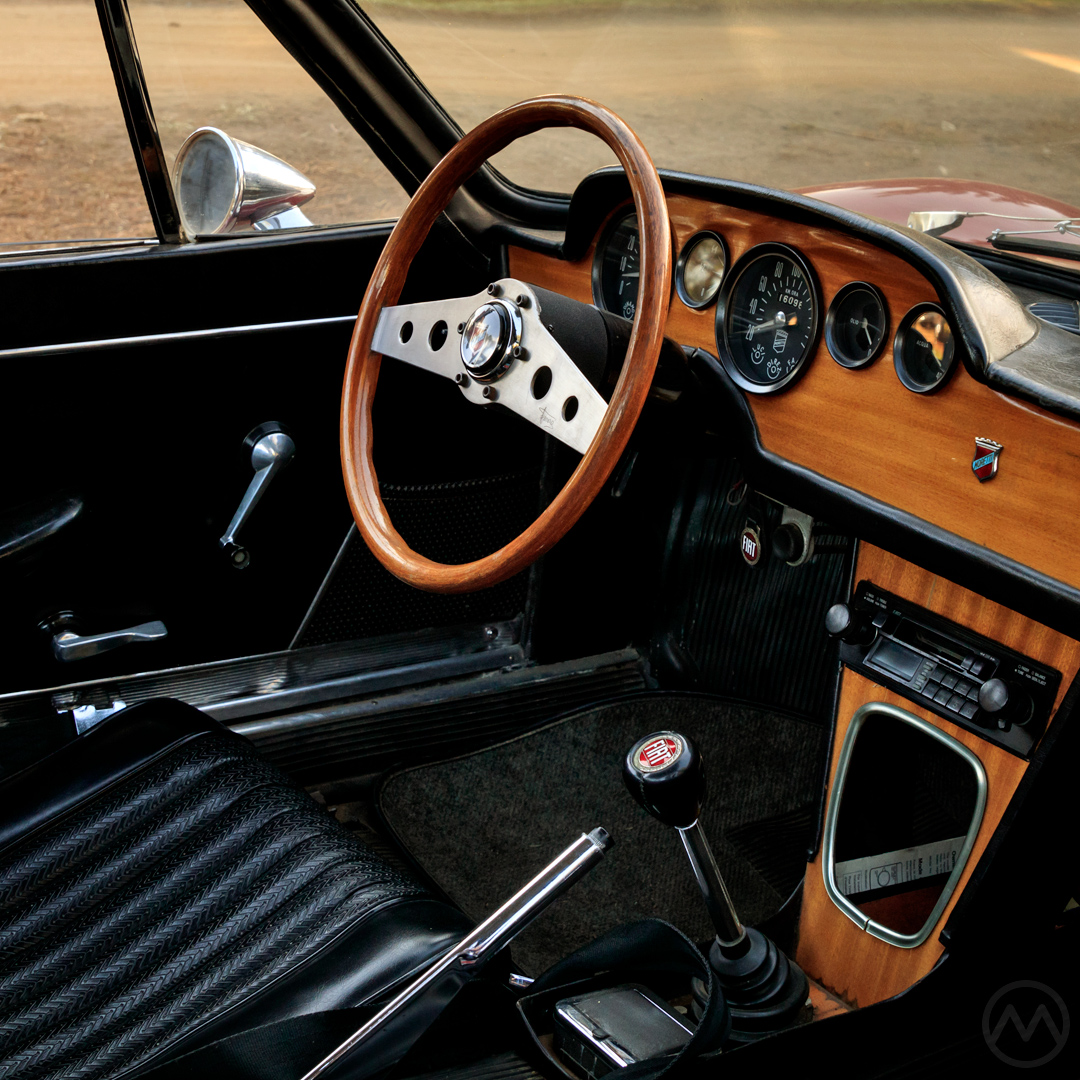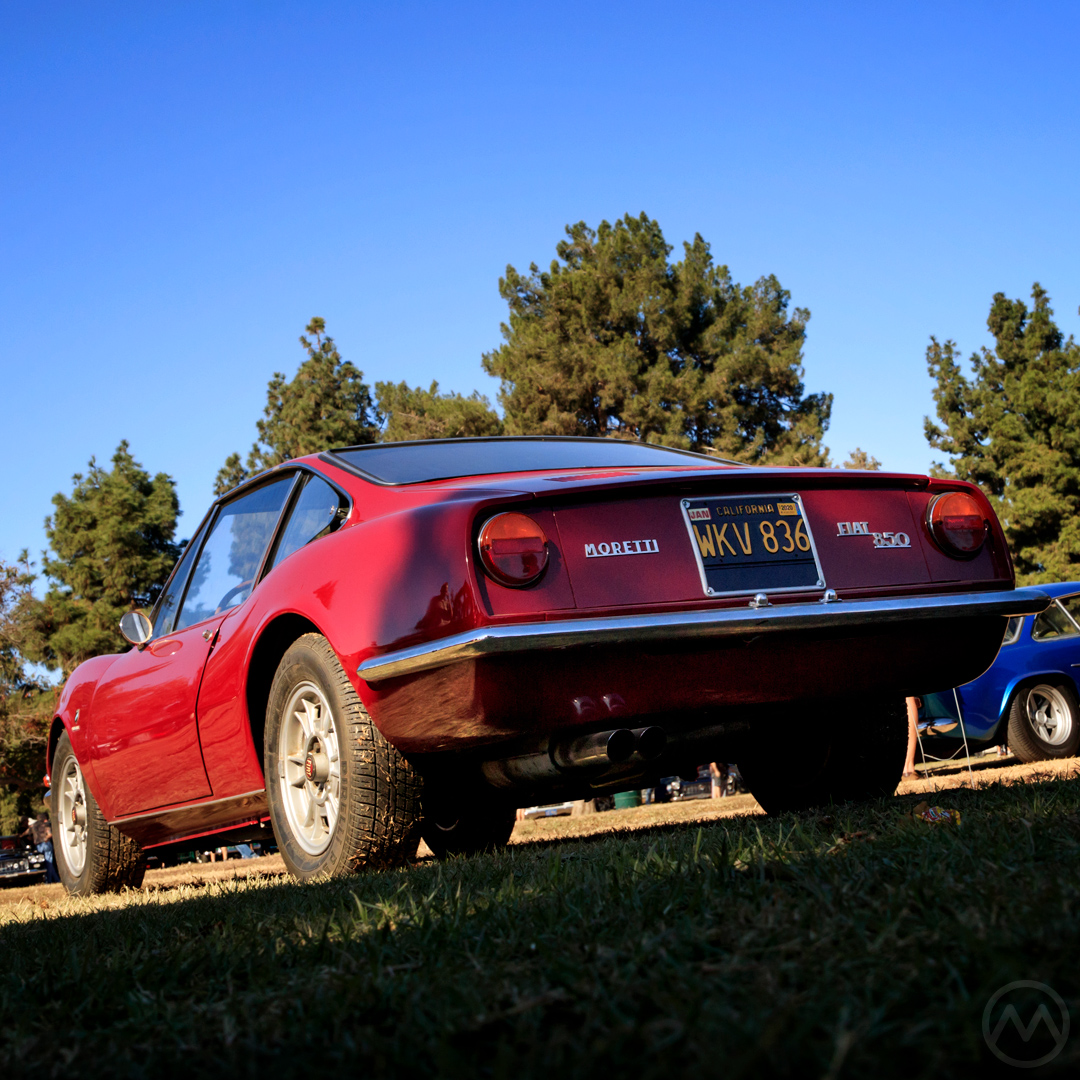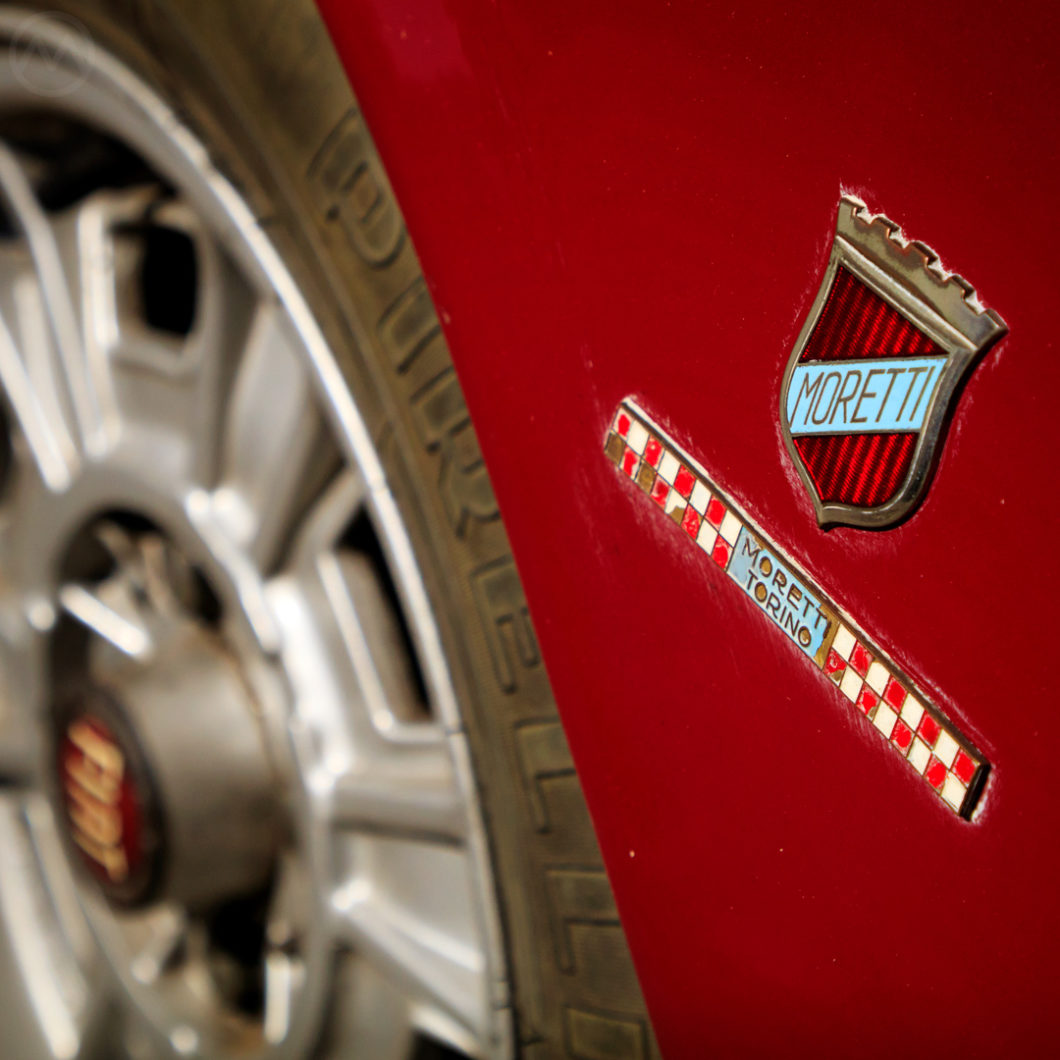Moretti as a manufacturer came to an end thirty years ago this month, after 64 years of producing motorcycles, sports cars, and what it was best known for by 1989 – Fiat based specials.
The Moretti 850 Sportiva (as you can probably guess, based on the Fiat 850) was one of the coolest. Later on it was often described as a (very) Miniature Fiat Dino and it definitely resembles the Dino spider – but the Moretti actually came first, and both cars owed their stylistic inspiration to a different Dino – Pininfarina’s 1965 Dino 206 Berlinetta Speciale.
The Sportiva was the archetypal Moretti – a super stylish coupe wrapped around the mechanicals of a simpler (Fiat) car and meant as something special for Italians wanting to stand out. A few months later, there was also a 124-based coupe that used some of the same themes.
Buyers really had to want to be stylish – because the style didn’t come cheap – these cars were often twice the price of the basic Fiats they were based or more. But in style-conscious Italy, where Fiat controlled 4/5ths of the new car market, standing out from the crowd was a good thing.
The Evolution of Moretti
Giovanni Moretti founded his eponymous Turinese company (on the Via Monginevro) in 1925. He was just 21 years old and already a veteran of a small motorcycle manufacturer – Elettra – when he decided to make his own bikes and motorcycle engines.
The company went through four distinct phases. The early years were two-wheeled, though Moretti designed a microcar in 1928 that wasn’t produced. The company branched into electric delivery vans and an electric passenger car during the war, but these were short-lived.

The company branched out into phase two – proper cars – in 1946-47 with the Cita. The Cita ws a Topolino-sized car powered by a tiny flat-twin. It had a heavy, almost Austin A-40 like body and like the Topolino it came as a 2-door sedan or a wagon. From the Cita the company graduated to building its own small sports cars – including the very fast for its size 750.
Moretti was proud to say his cars were not parts bin specials – but designing and building a whole bespoke small car eventually proved economically unsustainable. Either the mechanical pieces would have to come “off the rack” from a larger manufacturer or the end would soon be near. That led to phase three.
Moretti’s personal friendship with Gianni Agnelli led to a deal where Moretti was able to use Fiat mechanical pieces, though that made them essentially coachbuilt Fiats from then on and no doubt Moretti had to humble himself quite a bit to get the deal done.
At first, the Fiat-based models were to supplement the Moretti-designed cars, but after a swing and a miss at the U.S. market with the “Tour Du Monde” model, the products grew much closer to Fiat. By the early 1960s they had become bespoke versions of regular Fiat cars. Agnelli was not bothered by potential competition from the Moretti models. By their hand-built, low-volume nature they were going to be considerably more expensive than the regular Fiats they were related to.
Phases two and three were the heyday of the company – but beginning in the 1970s and especially in the 1980s, the coachbuilt cars gradually became unsustainable themselves. Unlike rival Giannini, Morettis were not Tuner cars, though they were sometimes in that very late era hard to distinguish from regular Fiats.
Phase four was “soft roaders,” starting in the early 1970s but current all through the company’s slow 1980s decline and closure at the end of the decade.
The Sportiva
The genesis of the 850 Sportiva arguably starts when its designer, Swiss-born Dany Brawand, met Giovanni Michelotti as a trainee at Ghia-Aigle in 1952. Brawand followed Michelotti to his own company 1959, where he worked on many designs bound for Moretti and Fiat.
Michelotti and Brawand had a falling out in late 1965, possibly over Brawand doing unsanctioned work for Moretti. Not long after, Brawand moved to Moretti full time. He would remain the company’s chief designer for the next 24 years, although not all Moretti designs came from Brawand in those years (a few were by Ghia).
Moretti began working on its own version of the Fiat 850 in 1964 and the car first appeared at the obscure Saloncino dell’Auto da Competizione in early 1966.
Although often compared with the Dino spider, the direct inspiration for both that car and the Sportiva was probably the Dino 206 Berlinetta Speciale, essentially a prototype for Ferrari’s 206 Dino (which was not called a Ferrari then).
Styled by Aldo Brovarone and Leonardo Fioravanti, that car debuted at the Paris show in October of 1965. There was quite a bit of cross-pollination among stylists in Turin at the time, so it’s possible Brawand had some knowledge of the Dino before it broke public cover.

Brawand’s lines were clearly a direct interpretation of the ideas, but a very different looking car overall and one designed around very tight constraints. The Dino Spider debuted at the 1966 Turin show, about eight months later, around the time the Sportiva was entering actual production.
The design was visually deceptive – it looks large but is actually only 41” (104cm) tall on an 80” (203cm) wheelbase. It’s dinky just like the 850 Spider, but you’d never know until you were right on top of it. Inside it’s the same way – the car is very low, but somehow airy and open inside with low seats nearly riding on the floor with no headrests. There’s a back area for luggage, but not for people.
Later on, a four-seat version was briefly offered. The “S4” Sportiva had the same basic ideas, but came out bulbous and awkward – much taller and with a higher beltline closer in proportion to the 850 Berlina.
The original Sportiva was light by modern standards and slightly lighter than the 850 Spider – but heavy for so small a car with just 47 hp. In stock form it was no faster than the regular 850, which it was considerably more expensive than – about 45% more depending on the market, sometimes more than a Fiat 124 Coupe or BMW 1602.
Nevertheless, it was undeniably sexy – though stock examples have big wheel gaps on the original suspension (this one has been lowered in front) owing to the suspension points of the base 850.
Power came from the 850’s stock 843-cc four, but more performance could be had with modified 982-cc engines from Giannini, who were specialists just like Abarth but for more humble budgets.
The Mystery Numbers
How many Sportivas were made and how long they were available for depends on who you ask – some sources say as few as 40 cars were made, some as many as 400. The consensus is that around 300 or so were built from late 1966 to early 1971, a figure bolstered by the Swiss consigner having ordered 30 cars. Late in the run, the front styling was revised with a bit of a resemblance to the Triumph Spitfire.

They were imported to the USA in small numbers, and even smaller after 1968’s DOT and NHTSA regulations that made such cars difficult to sell in the United States, though by some accounts imports continued into 1970 (the 850 Spider was sold in the U.S. into 1973).
This particular car has been modified quite a bit to be faster and lower than a stock example, and so it can deliver performance on par with the looks though it is still a sub-1-liter car, not a muscle car.
By 1972, Moretti was shifting to light offroaders like the Fiat 127-based MidiMaxi, a vehicle similar to the Citroën Mehari and Renault Rodeo, but more specialized. These were also from Brawand’s pen.
The fancy coupes seemed to no longer be a sustainable business, so most of the Morettis of the late 1970s and early 1980s were of the “soft roader” variety. That included the Fiat Panda Rock, an open-topped 4WD Panda. There were also gilded or lightly modified versions of regular Fiats, but by the late 80s the company was no longer viable.

